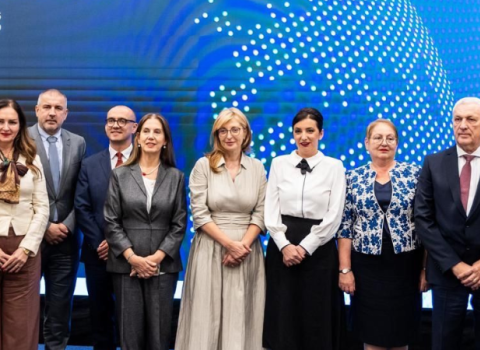Researchers at Chalmers have for the first time demonstrated a novel subharmonic graphene FET mixer at microwave frequencies. The mixer provides new opportunities in future electronics, as it enables compact circuit technology, potential to reach high frequencies and integration with silicon technology.
A mixer is a key building block in all electronic systems – a device that combines two or more electronic signals into one or two composite output signals. Future applications at THz frequencies such as radar systems for security and safety, radio astronomy, process monitoring and environmental monitoring will require large arrays of mixers for high-resolution imaging and high-speed data acquisition. Such mixer arrays or multi-pixel receivers need new type of devices that are not only sensitive but also power-efficient and compact.
The ability in graphene to switch between hole or electron carrier transport via the field effect enables a unique niche for graphene for RF IC applications. Thanks to this symmetrical electrical characteristic, the researchers at Chalmers have managed to build the G-FET subharmonic resistive mixer using only one transistor. Hence, no extra feeding circuits are required, which makes the mixer circuit more compact as opposed to conventional mixers. As a consequence, the new type of mixer requires less wafer area when constructed and can open up for advanced sensor arrays, for example for imaging at millimetre waves and even sub millimetre waves as G-FET technology progress.
“The performance of the mixer can be improved by further optimising the circuit, as well as fabricating a G-FET device with a higher on-off current ratio”, says Jan Stake, professor of the research team. “Using a G‐FET in this new topology enables us to extend its operation to higher frequencies, thereby exploiting the exceptional properties of graphene. This paves the way for future technologies operating at extremely high frequencies.”
In addition to enabling compact circuits, the G-FET provides potential to reach high frequencies thanks to the high velocity in graphene, and the fact that a subharmonic mixer only requires half the local oscillator (LO) frequency compared to a fundamental mixer. This property is attractive especially at high frequencies (THz) where there is a lack of sources providing sufficient LO-power.
Moreover, the G-FET can be integrated with silicon technology. For example, it is CMOS compatible (Complementary Metal Oxide Semiconductor) and among other things it can be used in CMOS electronics for backend processing on a single chip.





 A unique international forum for public research organisations and companies to connect their external engagement with strategic interests around their R&D system.
A unique international forum for public research organisations and companies to connect their external engagement with strategic interests around their R&D system.